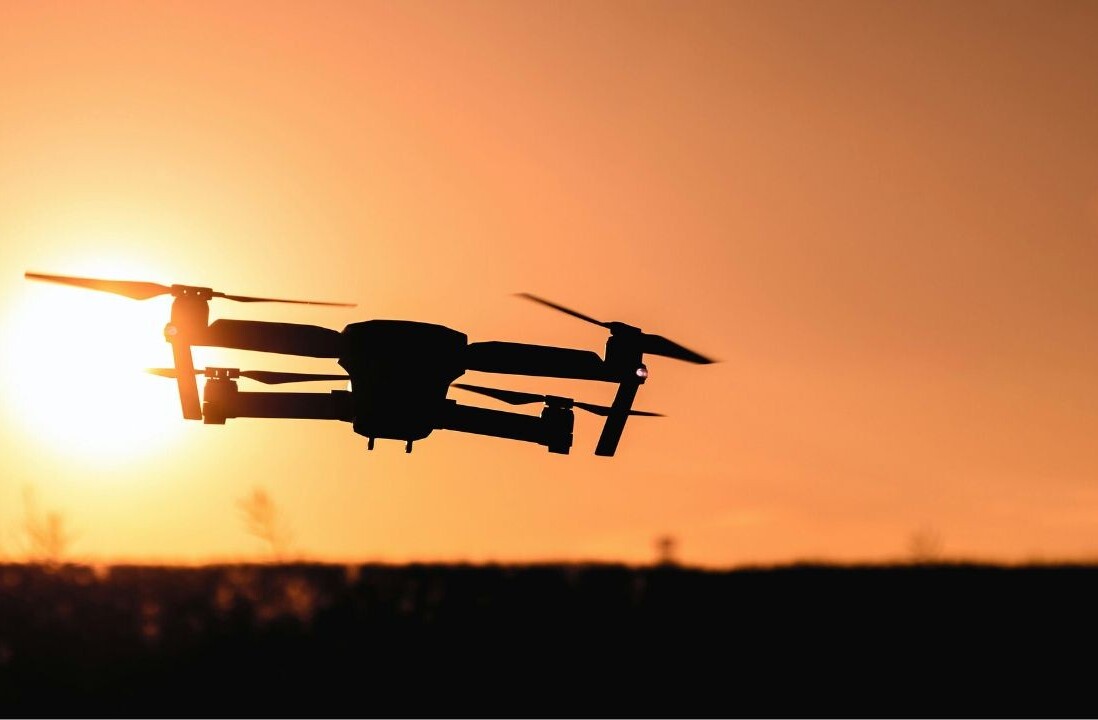
Technology for healthcare is changing. In the past where we may have taken part in the passive act of being hooked up to a machine by our doctors, more people can now monitor their health and well-being for themselves and use the resulting data for self-improvement.
Three Type 1 diabetics walk into a coffee shop, order drinks and check their monitors. There’s no punchline for that one, it happens every day.
Type 1 diabetes is where insulin-producing cells in the body have been destroyed and the body can’t produce any insulin. So food intake and activities need to be monitored so that patients can manage their own insulin levels when their bodies don’t.
MySugr CPO and co-founder, Fredrik Debong, Kyle Jacques Rose, advisor at mySugr and Paul Buchanan organiser of #gbdoc, the UK social network for people with diabetes, are all working on ways of living with the condition using technology to ease the way.
Community support
Buchanan was recently diagnosed with diabetes. At a loss as to what to do, he naturally took to the internet to find out more and see what people were saying about managing their own condition.
“There are squillions of diabetics online,” he says. “I was only diagnosed last year so I was looking for answers. The community is unbelievably supportive, helpful with advice and emotional support. They even provide technical advice because if they don’t know they will know specialists around the world who will know.”
One thing Buchanan noted about the diabetic community in the UK, was that there was little in the way of a cohesive social media effort to bring people together.
In the US, there is the DSMA – Diabetes Social Media Advocacy group with its own hashtag, so Buchanan launched the #gbdoc tag, Twitter account and Facebook page. “We had our first tweet chat and there were 500 tweets in under an hour. 60-70 people showed up and there was no advertising for it, just word of mouth,” he says.

The message spread quickly and for the second tweet chat, Paul had over 1.2 million impressions and the hashtag trended globally. Not only has the effort made an impression with other diabetics and their families, Buchanan counts NHS staff members in his Twitter follower count too. “They’ve written to me to say they think it is history in the making for patient advocacy,” he says with well-earned pride.
Buchanan plans to set up a not for profit social enterprise company to run the site and the tweetchat. Any profits from advertising or sponsorship will go toward scholarships diabetics who want to work in social media and sm advocacy. “Basically I want to get the community to work with and for itself,” he says..
Self control
There are cultural differences between the management of chronic illness in the United States and the UK. One of the interesting issues that affects self-management is how we pay for our medical treatment.
In the UK, the tax funded system of healthcare means that most people can head to their GP or be treated in a hospital without worrying too much about the hefty insurance fees seen in the American private system.
But this also affects how doctors treat patients and how we think about controlling our own healthcare. If you can see what you are paying for treatment, you may decide to take a closer interest in how it is administered.
“There’s been a philosophical change in this country in the last decade or so. According to the NHS they are moving to a model of patient-led management,” says Buchanan. “They are meant to be empowering the individual to manage their own care long-term. But it seems to be that 95% of the professionals in healthcare in this country still have an ingrained mentality that is command and control.
“They will talk the language of empowering the patient and that you’re in control of condition but still expect to be the one that is referred to for any decision-making. So there is an imbalance. In the States, patients have to pick up the bill so you feel you have the right to question what you’ve been given. We tend never to question a doctor.”
Debong agrees that because a service appears to be ‘free’ at the point of care, there is an assumption that others will take care of you, rather than you taking care of yourself. “There is a difference between chronic conditions and general health care. ‘Dr Google’ is incredibly informative if you ask the right questions but it is not a diagnostic tool. With chronic conditions, you can find a community online but you still have to decide whether you take advice from that community. That said, I haven’t seen the diabetic community advocate medical advice, if you don’t do the right things you wake up dead.”
Lifetime investment
Managing a chronic illness can seem like an unrewarding experience. The constant checking and updating is not something most people would do by choice for fun.
“It’s a feedback loop,” explains Debong. “What you do today with diabetes, you hardly feel at the time. If you look after yourself like a ninja today, you may not have a complication in 30 years. But that’s a long feedback loop. It makes you lazy because it feels like there are no immediate consequences.”
Buchanan agrees and points out that although the online community looks fairly big, it’s a drop in the ocean in comparison with the actual numbers of Type 1 diabetics in the UK.
“It’s very easy in a digital bubble to think that everyone is involved, especially as there are thousands of us online but we represent a tiny fraction of Type 1 diabetics. There are 230,000 Type 1 diabetics in the UK and if you take the number of how many are positively engaged with managing their condition, I’d hesitate to guess exactly but there is majority who can be lackadaisical.”

But getting lazy is a dangerous game for this illness as Buchanan vividly explains, “Bad management of diabetes has long-term consequences. It could be a decade until something happens. There are people who were diagnosed in their 20s, now in their 30s and are blind in one eye with no feeling in their feet because they spent the best part of eight of those ten years doing all the wrong things and not being in control. They get into control when they face the reality and going blind is pretty real.”
Most people with Type 1 diabetes are diagnosed as children. It’s another part of the story that influenced Debong and Buchanan when it came to coming up with solutions for self-reliance.
“When you are diagnosed as a kid, someone giving you a lecture about life and death is utterly meaningless. At what point do you take responsibility for the long-term consequences of decisions? Most 20 year olds don’t have a pension. They think they’ll be so old they won’t care,” says Buchanan.
Debong feels that there is too much negative influence associated with the management of chronic illness. “You could take better care of yourself or you could die. It’s always in the back of your mind. When you connect something with this type of negativity, you shut it off. You could have it on your mind all day but you’d go crazy. Around 25% of diabetics are clinically depressed,” he notes.
Learning curves and lifestyles
As a relatively new patient, Buchanan has been learning from scratch about how to manage his condition and there are plenty of tips and tricks, but not all of them seem so positive.
Frequently Type1 patients need to take tests where blood is taken from a pin-prick to the finger. When he was learning about the process Buchanan was told never to use his thumb, index or middle fingers. He thought that maybe the process was easier or better somehow when using only the ring and pinky fingers but this was not the case. “I was told that others were warned that when they were diagnosed they were told they would need those fingers to read braille when they went blind. That’s the level of education. Imagine being told that as a child. Now every time they test themselves that’s on the top of their mind ten times a day. It gets too much.”
Friends and family
For people with ongoing conditions, keeping themselves in check is only part of the issue, the friends and family around them also naturally show concern.
Buchanan and Debong both find it easier to share their monitoring data on apps with their loved ones. Not only does it help to share information, it puts minds at rest or shows when there has been a rocky patch.
“As a user of the MySugr application I can show you what I have to do on a daily basis,” says Buchanan opening the app on his phone. He points to the screen, “That’s my diabetes. There’s my day on these charts. Every time I take a test I log the result and it creates a chart for me. If you can keep in line you haven’t got diabetes, you’re a human pancreas.”
The line looks consistent and there’s healthy colours displayed in the app. Even as a non-user, a glance at the data shows that things seem to be fine.
“Just by telling you that’s my day, you can tell I am doing okay,” explains Buchanan. “The results also show me what my readings were, how I was feeling. All sorts of things affect glucose, stress, altitude, temperature, hormones, socialising. I look at the graph and I smile because I am having a good day. If I was having a bad day, I can see a spike and know it is an hour and a half after I’ve eaten and note why. I see it not as a negative tool or that I’m a bad diabetic, but I can see the reasons why.”
Data driven diseases
Debong clarifies, “This is a data driven disease. So we need to make that data useful and motivating. Quirky, fun and useful. By describing the contexts of having a beer, you get a context.”
Logging data has always been a part of the life of a diabetic. Whether it was a table on paper marked with a pencil or todays apps and electronic testing kits, it is the method for making sure your decisions don’t catch up with you later.
 The task of constantly logging personal information can take its toll though. Debong and Buchanan call it ‘diabetes burn-out’. Patients often give up taking their own data and skirt around problems when they see their specialists. “You learn to lie to cope. You don’t want to meet the guy in the lab coat every few months for fifteen minutes and you don’t want a slap on the wrist for not keeping track. So you make it up ten minutes before,” says Debong.
The task of constantly logging personal information can take its toll though. Debong and Buchanan call it ‘diabetes burn-out’. Patients often give up taking their own data and skirt around problems when they see their specialists. “You learn to lie to cope. You don’t want to meet the guy in the lab coat every few months for fifteen minutes and you don’t want a slap on the wrist for not keeping track. So you make it up ten minutes before,” says Debong.
There is a hope that the latest slew of apps will provide ways to encourage people to keep track in ways that are meaningful to them. However, integrating the data and bringing it to a GP is a different matter.
Buchanan says that doctors are not always open to looking at the new methods of tracking and considering it a part of patient care. Currently, the devices for pin-prick blood tests are also closed systems where it is easier to copy the data from a screen than to import it to any other data system.
“Your GP won’t understand by looking at the app,” says Buchanan. “Your endocrinologist will, but you see them for a few minutes every few months. They look at the last set of results, an average of blood sugar over three months, they look at cholesterol levels, blood pressure and weight, check feet and hands a few questions and show you the door. If your average levels are at the right range that’s it and away you go.”
Living with diabetes is complex, but not insurmountable. Kyle Jacques Rose says that managing the condition is both data analysis and sleight of hand. “I get the impression as a patient when I am speaking to other people they think you just need to take a little bit of insulin. That’s true in some ways and it’s what I would rather they think but there are all sorts of practical implications of living with diabetes.”
The quantified self for health and well-being is a growing field. From Fuel bands and FitBits, to Glooko and MySugr, the extended memory we call a mobile device is helping people manage themselves and hopefully feel a bit better.
Finding one that encourages people to keep adding the data and log their results is not just an amusing way to engage with mobile technologies, it’s something that could help to ensure a healthy life and a longer one.
Image Credit: Mary Rotman
Get the TNW newsletter
Get the most important tech news in your inbox each week.





